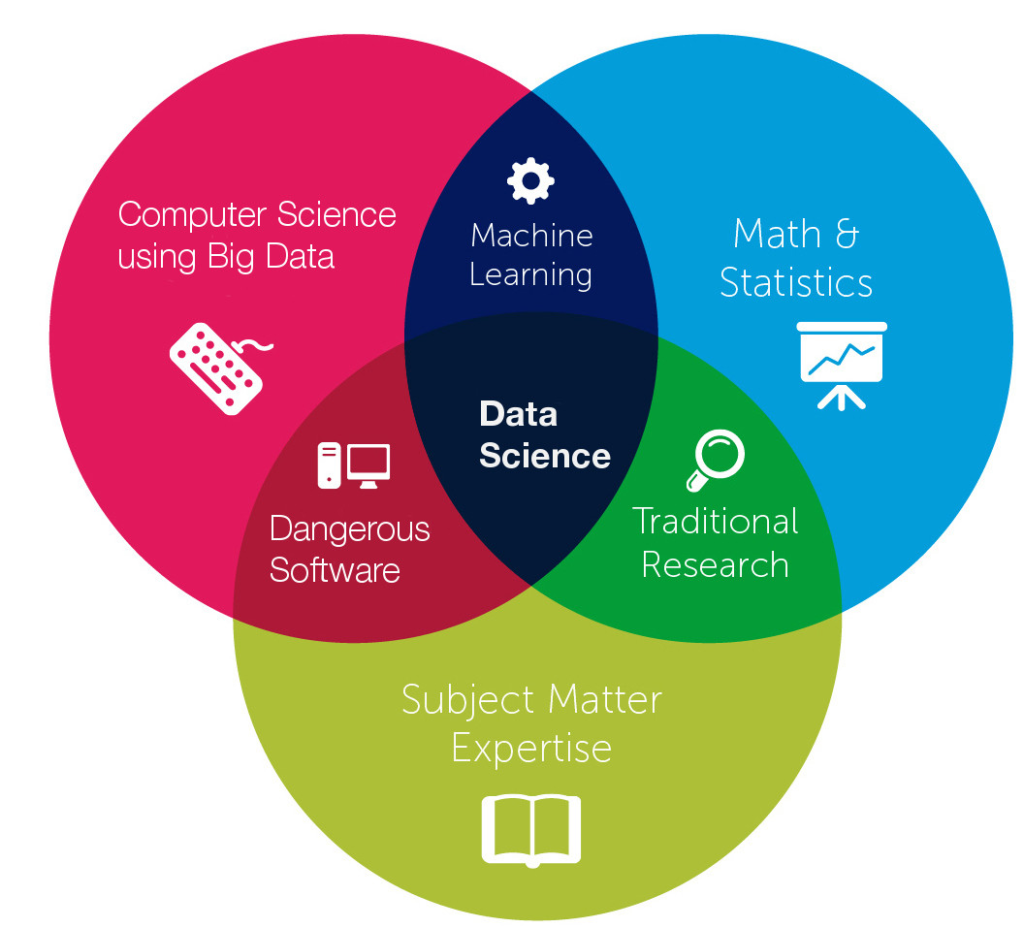Introduction
If like me, you are a big fan of football (soccer) and new technologies, I am pretty sure you have read at least a blog post or an article about statistics usage in sport!
The aim is basically to have better results, to reduce athletes’ injuries and to improve sport science by algorithms usage.
At the beginning, the growing use of analytics in football has attracted criticism and cynicism.
But when Billy Beane in 1999, the General Manager of Oakland A’s baseball team faced major successes by recruiting players using Big Data through the help of Paul DePodesta, an economics graduate from Harvard, everything changed.
Since 2000s, football teams are now convinced and use it as much as they can.
But what is Data Science?
Data science, Big Data, Machine learning… Not really easy to know what’s the difference right?
So let’s get our definitions straights!
Data Science:
Data science is a multi-disciplinary field that uses scientific methods, processes, algorithms and systems to extract knowledge and insights from data in various forms, both structured and unstructured, similar to data mining.
Big Data:
Big Data is a field that treats of ways to analyze, systematically extract information from, or otherwise deal with data sets that are too large or complex to be dealt with by traditional data-processing application software or humans.
Machine Learning:
Machine learning (ML) is the scientific study of algorithms and statistical models that computer systems use to effectively perform a specific task without using explicit instructions, relying on patterns and inference instead. It is seen as a subset of artificial intelligence.
How Big Data and Machine Learning different?
Here are the major differences between Big Data and Machine Learning and how we can use them:
1. First of all, Big Data includes ingestion and extraction tools. Whereas Machine Learning gives the computer to learn without being explicitly programmed.
2. Big Data as the name suggests, is the analysis of Big Data by discovering patterns. Machine Learning is teaching a machine to respond to unknown inputs and give desirable outputs.
3. Machine Learning can see with better depth, the relationship between pieces of data.
4. Big Data analytics is all about extracting information and Machine Learning is to do further analytics for predicting output results.
5. Big Data is more related to do with High-Performance and ML with Computer Science.
To conclude:
Big Data purpose is to store large volume of data and find out patterns in data.
Machine Learning purpose is to learn from trained data and predicts or estimates the future.
How cool is that!
How are they connected and works together?
This scheme will help you to understand how everything is related:

They all have their purposes but when used together, can do real wonder !
Ok let’s talk about Football now 🙂
As explained in the introduction, Data Science in Football is pretty new.
What Data Science can bring to a football manager?
Football teams use mostly Data Science to prevent injuries, to optimize training and player health because that’s the easiest part for Data Science in football… For example you can easily know with Big Data on what specific aspect of his game a player needs to focus, if he has to rest…
Indeed, Football is way more complicated than other sports and managers want to keep it simple. In basketball, tennis or American football, actions are segmented and are high scoring. In endurance sport you have much less parameters too.
Football is completely different (and that’s why it’s the best sport ever) because it’s continuous, very strategic and low scoring.
Furthermore, questions to ask are way more complicated than in other sports:
- What was the tactic we used at the moment we scored?
- Was it during a counter attack or during pressure? (very subjective!)
- How the goal was scored? In which context?
However, Data Science in Football has improved drastically over the last years and Football Teams have understood how they can intelligently uses it.
Here are some examples and stories !
In Southampton, players like Sadio Mane, Dejan Lovren and Morgan Schneiderlin have been bought by using Big Data. Because of their unknown talents and their great statistics. Then, they have been sold with a big profit to Liverpool or Manchester United.

With Data Science and ML, we can now simulate events and predicts the future ! For example: “How this team is going to defend with those 4 players? What happens if we switch that player with another one? Is my player going to be injured if he plays with that level of fatigue? “
Zinedine Zidane, Real Madrid Manager, explained in a documentary that he noticed with his staff that the team he was going to play had a weak point: most of goals conceded where on the right side of the defense and conceded at the end of the match. Zidane with that information let his fastest player Gareth Bale on the bench and put him on the pitch during the last 15 minutes. And guess what, he scored ! He could use his speed and it was on his favorite side of the pitch.

Moreover, we have through Big Data learnt that corners have more chances to bring a goal if the ball is shot close to the first pole. Maybe Zidane already knew Big Data in July 1998…

You can find so many stories on Internet about Football events related to Big Data and it’s so much fun 🙂
We can see that Data Science seems to be used by managers to take their decisions on so different topics such as training, recruitment or tactics.
Is it the end of Football?
As explained, Football is a really complex game. So don’t worry, we will always have surprises. We can see that Data Science seems to be used by managers to take their decisions on so different topics such as training, recruitment or tactics. But at the end of it, THEY take the decision, not the computer (yet..)
Maybe we are too new at this and computers will replace managers. It could be a great experience to make! We have seen for example with DeepMind (developed by Google) that over 49 Atari games learned, it could won 50% of the time against best players. So who knows ?
So far, even the best managers can’t say what the most efficient tactic in Football is.
If you check last winners, you will see completely different styles in World or European championships:
Offensive:
Spain 2008-2012 Germany 2014 France 2000 Holland 1988
Defensive:
France 98-2018 Portugal 2016 Greece 2004 Italy 2006
Conclusion
Football is not an exact science and is complicated.
Data Science shouldn’t take the lead on managers even if they will use it as much as they can. And team management, motivation and so many fields can’t be handled by a computer in my opinion. How a computer can sing “You will never walk alone” with heart and
Thank God, Football is saved!

It can definitively help you to make small differences. And in professional sport, most of the time, winning is related to details ! Like 40 seconds during the European Championship in 2000. So let’s use Science and Mathematics to win trophies !

Sources:
- Wikipedia
- lebigdata.fr
- Quora.com
- educba.com

